| Image | Plant | Status | Notes | Events |
|---|---|---|---|---|
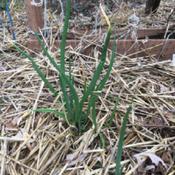 |
Egyptian Walking Onion (Allium x proliferum) |
Have Perennials Edibles Fruits & Vegetables Plants Successfully Growing |
2021 Chicagoland Annual Plant Swap - Jasmine 2021 Chicagoland Annual Plant Swap - luvtogarden 2022 Chicagoland annual plant swap - Jasmine Allium x proliferum is a cross between Allium cepa, the cultivated onion, and Allium fistulosum, the Welsh onion. Zones 3-10. |
May 15, 2021: Obtained plant (2021 Chicagoland Annual Plant Swap 2021 Chicagoland Annual Plant Swap) May 20, 2021: Transplanted (Into Garden one) |
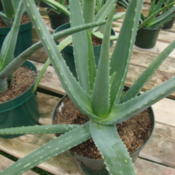 |
Aloe Vera (Aloe vera) |
Have OP Tender Perennials Edibles Medicinal Houseplants Plants Successfully Growing |
2021 Chicagoland Annual Plant Swap - Pepperlove 2022 Chicagoland Annual Plant Swap A succulent, Aloe vera features long, fleshy leaves containing an oily gel that has a number of cosmetic and supposed medicinal uses. Large clumps of pretty, yellow, or orange-colored flowers can form in proper climates. Drought tolerant, hardy only to very light frosts. Grows to 1-3 ft / 1 m. Zone 8 to 11. |
May 15, 2021: Obtained plant (Chicagoland annual plant swap 2021 - Pepperlove Chicagoland annual plant swap 2021) |
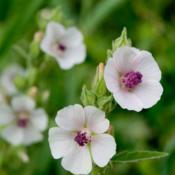 |
Marsh Mallow (Althaea officinalis) |
Have Seeds OP Collected or purchased 2024 Collected or purchased 2022 Perennials Edibles Medicinal Smoke Tea Flowers Herbs Trees & Shrubs Plants Successfully Growing |
N.S. UK 2021 EARLY SPRING SEED EXTRAVAGANZA #1 - 2024 - Mimistime - Outsidepride 2023 African native. The original source of an Egyptian confection that evolved into today's marshmallows. The roots and velvety leaves have been eaten as a vegetable for centuries, often fried with onion and garlic. 3-4 foot stems of 1-2 inch, white-to-pink flowers are reminiscent of hollyhocks, to which this plant is related. Also renowned in various folk cultures for its medicinal properties. Not sure if it returned this spring 2022. Zones 3-9. |
April 23, 2021: Seeds sown (In unheated greenhouse. Plug flat one row 13.) May 1, 2021: Plant emerged |
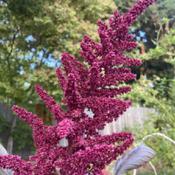 |
Amaranth (Amaranthus) |
Have Annuals Edibles Tea Flowers Grains Greens Full Sun |
Amaranth mixed - Received in trade from A.R. Manvel Texas 8-2020 90-150 days to harvest seed. Start inside 6-8 weeks before the last frost or direct seed outside once the danger of frost has passed. About 100 days to harvest seed. |
June 15, 2023: Transplanted (3 Into Garden Two.) |
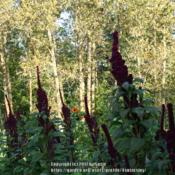 |
Amaranth (Amaranthus 'Elephant Head') |
Have Annuals Edibles Tea Flowers Grains Greens Full Sun |
From M.K. Burnsville MN 12-2020 Sow after danger of frost. |
|
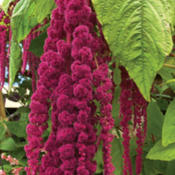 |
Love Lies Bleeding (Amaranthus caudatus) |
Have Seeds OP Collected or purchased 2024 Annuals Edibles Medicinal Flowers Grains Greens Full Sun |
Received in trade from M.K. Piqua Ohio 10-2020 Tomatoes Galore Swap 2024 - LoriMT - packed for 2022, annual, 4' tall, showing drooping red panicles Seeds are edible and grown as a grain crop in parts of South America. 1 It is also used in Africa to make beer, porridge, flour, and sprouted seeds are used as a vegetable in Peru and Ethiopia. Start inside 6-8 weeks before the last frost or direct seed outside once the danger of frost has passed. About 100 days to harvest seed. Sow after danger of frost. |
|
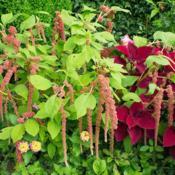 |
Love Lies Bleeding (Amaranthus caudatus 'Coral Fountain') |
Have Annuals Edibles Flowers Grains Greens Full Sun Unsuccessful |
6th Annual NFTSRSS - Aprilard1 - 2021 The Great Seed Vault Grow Out 2021 - Flowers 75 Days Plant died after transplanted. DND's All Seeds Swap #9 (2022) - Jlee160 - 2022 3'-5' tall - 1'-2' spread |
April 16, 2021: Seeds sown (In unheated greenhouse. Plug flat one row 3.) April 22, 2021: Plant emerged |
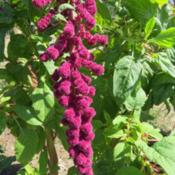 |
Love-Lies-Bleeding (Amaranthus caudatus 'Dreadlocks') |
Have OP Annuals Edibles Flowers Grains Greens Full Sun |
From DnD Swap - IJsbrandtGA - 12-2020 | |
| Amaranth (Amaranthus cruentus 'Fercita') |
Have Seeds Collected or purchased 2023 Edibles Grains Full Sun Sow in Unheated Greenhouse |
2023 Chicagoland annual plant swap | ||
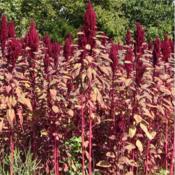 |
Amaranth (Amaranthus cruentus 'Red Garnet') |
Have Annuals Edibles Flowers Grains Greens Full Sun |
DND's All Seeds Swap #9 (2022) - sweetloam77 - gr 2022. The seeds can be cooked whole, popped like popcorn, or ground into a type of flour. |
|
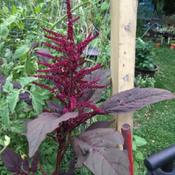 |
Amaranthus cruentus 'Red Spike' |
Have Seeds Collected or purchased 2023 Annuals Edibles Flowers Grains Full Sun Direct Sow Sow Indoors Under Lights Sown 2023 |
Slow Swap & Wishes -M.R. Algonquin IL- 2023 | April 6, 2023: Seeds sown April 10, 2023: Plant emerged (1 seedling emerged.) May 22, 2023: Transplanted (4 plants into Garden Two ) |
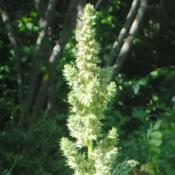 |
Redroot Pigweed (Amaranthus retroflexus) |
Have OP Edibles Grains Greens Weeds Full Sun |
||
 |
Joseph's Coat (Amaranthus tricolor 'Early Splendor') |
Have OP Annuals Edibles Flowers Grains Greens Full Sun |
From DnD Swap - DianeKM - 12-2020 | |
 |
Amaranth (Amaranthus tricolor 'Pink Beauty') |
Have Seeds OP Collected or purchased 2023 Annuals Edibles Grains Greens Full Sun Direct Sow Sown 2023 |
BC 2023 Amaranth is very much a summer crop. Exposure: Full sun. Amaranth needs a nice hot summer for its entire growth period of 40-50 days. Direct sow in late spring, once nighttime temperatures are steadily above 10°C (50°F). 40-50 days. |
May 16, 2023: Seeds sown (1 c several) |
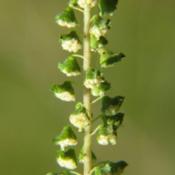 |
Common Ragweed (Ambrosia artemisiifolia) |
Have Annuals Edibles Medicinal Tea Native Wildflowers Herbs Weeds Plants Successfully Growing |
Wild edible. | |
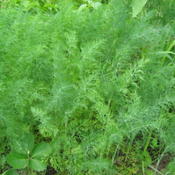 |
Dill (Anethum graveolens 'Long Island Mammoth') |
Have Seeds Collected or purchased 2024 Annuals Edibles Seasoning Flowers Herbs Full Sun |
Purchased - M - 2-2022 EARLY SPRING SEED EXTRAVAGANZA #1 - 2024 - Mimistime - Harvested 2023 This strongly aromatic, self-seeding herb is native from the Mediterranean region to Southern Russia and was cultivated for its carminative, or gas dispelling, properties by the Greeks and Romans. Both its fern-like foliage and spicy seed have been used for centuries to flavor soups, sauces, and pickles. Long Island Mammoth Dill is an heirloom variety popular for its vigor and use in pickling. Dill attracts beneficial insects and is the larval host for the black swallowtail butterfly. 70 days |
May 1, 2022: Seeds sown (With Kale in Garden One) |
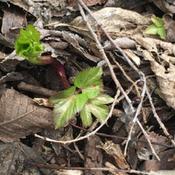 |
Garden Angelica (Angelica archangelica) |
Have Collected or purchased 2023 Biennials Edibles Medicinal Tea Herbs Full Sun Part Shade Winter Sow Plants Successfully Growing |
From DnD Swap - Phytocraft -12-2020 In Sun Garden Two 2022 |
December 27, 2020: Seeds sown (WS - Jug 5) March 30, 2021: Plant emerged (Several) |
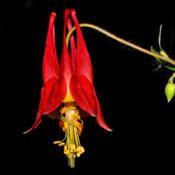 |
Eastern Red Columbine (Aquilegia canadensis) |
Have OP Perennials Edibles Flowers Full Sun |
From pm 2022 Aquilegia canadensis, the Canadian or Canada columbine, eastern red columbine, or wild columbine, is a species of flowering plant in the buttercup family Ranunculaceae. It is an herbaceous perennial native to woodland and rocky slopes in eastern North America, prized for its red and yellow flowers. Zones: 3 - 8. |
|
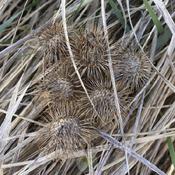 |
Common Burdock (Arctium minus) |
Have Trade as seed OP Biennials Edibles Fiber Medicinal Herbs Full Sun Plants Successfully Growing |
Very good medicinal and edible properties. The edible parts include the leaves; root; seed; and Stem. Burdock is one of the foremost detoxifying herbs in both Chinese and Western herbal medicine. Its fiber has also been used for paper. hardiness: 4-8 |
|
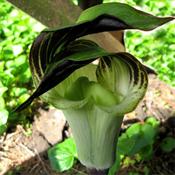 |
Jack in the Pulpit (Arisaema triphyllum) |
Have Perennials Edibles Native Wildflowers Part Shade Full Shade |
DND's All Seeds Swap #9 (2022) - SameOldBrandNew - 2021 G - These are from my garden but seeds are originally sourced from local woodlands. Named for its resemblance to a preacher in a canopied pulpit, Jack in the Pulpit grows wild in woodland and marsh areas and sends up its unique hooded flower in the spring. Though Native American tribes gathered and boiled the fleshy roots as a vegetable, eating the root raw causes a sensation similar to swallowing a mouthful of glass shards. This sensation is caused by the calcium oxalate crystals in the plant, which protect it from predatory animals. The faint odor, however, attracts pollinating insects to the flowering spadix, or "Jack." Early Americans found many uses for this plant, including making poultices to reduce inflammation or grinding the dried roots for flour or starch. Sowing: To break its dormancy this Jack in the pulpit seed needs a period of cold moisture, a period of warm moisture, followed by another period of cold moisture. Mix the seed with moist sand and store it in the refrigerator for 60 days, then move it to a 70-75 degrees F location for 30-60 days, followed by another 30-60 day period in the refrigerator before planting. To accomplish this naturally, simply plant the Arisaema Triphyllum seed in late fall and wait until the second spring after planting for germination. In late fall or early spring, direct sow the treated seed 1/4" deep. Germination should take place within 14-20 days. Growing: This plant grows best in moist soil and dappled shade. They grow very slowly, producing only one or two sets of leaves in their first season and flowering after about five years. For the best growth, keep the soil moist and covered by a layer of leaf mulch. This plant will spread over time, eventually forming a colony that will last for many years; the ripe berries will drop and germinate well in the following spring. Birds and mammals are attracted to the berries, which develop after the flower fades. Deer avoid this plant. Harvesting: All parts of this plant should be considered poisonous since they cause a painful burning sensation and blisters when touched or ingested. Seed Saving: Jack-in-the-Pulpit plants can become male or female depending on their environment. After the hooded female flower fades, a large cluster of red berries will form; each berry contains several seeds. Wearing gloves, gather the berries and smash them in a large container. Rinse the mixture in a strainer, removing as much of the pulp as possible until only Arisaema Triphyllum seeds are left. For best germination, do not allow the Jack in the pulpit seeds to dry; mix them with moist sand and keep them in the refrigerator until planting. It thrives in USDA Hardiness Zones 4 to 9. Jack in the pulpit prefers part to full shade and fertile, evenly moist soil. |
February 15, 2023: Seeds sown (WS 10.) |